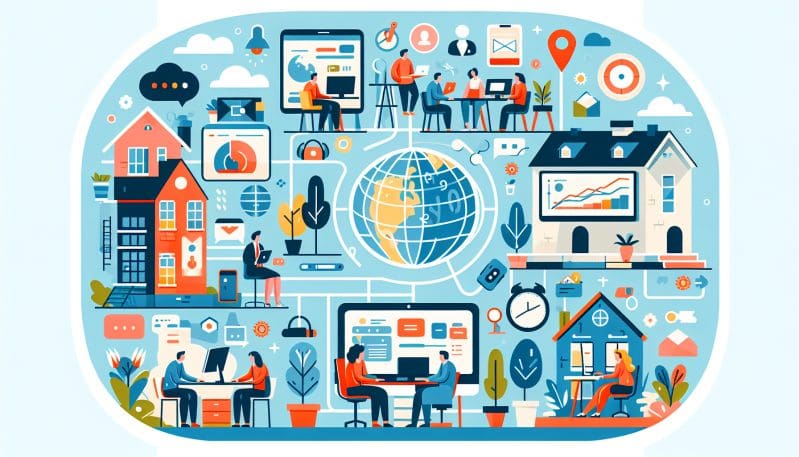Remote Work Revolution: Designing Inclusive Virtual Workplaces
- Home
- Remote Work Revolution: Designing Inclusive Virtual Workplaces

- Editors Desk
- February 29, 2024
- 0 Comments
The emergence of remote work as a mainstream model has been one of the most significant workplace transformations of the 21st century. Initially a necessity driven by the global pandemic, it has since evolved into a preferred mode of operation for many organizations and their employees. This revolution has redefined not just where we work, but how we work, who gets to work, and what a ‘workplace’ even looks like. With the potential to make employment more accessible than ever, the shift to remote work has flung open the doors to inclusivity – but only if we design our virtual workplaces with intention and care.
At No Worker Left Behind, we’re taking a close look at this evolution and focusing on three pivotal aspects of the workforce: work, worker, and workplace – each rendered anew in the context of remote models.
For workers with disabilities, caretakers, and those living in geographically remote areas, the traditional office-centric model has often been a barrier. The requirement to be physically present can exclude those for whom commuting is difficult or impossible. With the advent of remote work, this barrier can be dismantled, offering a platform for genuine inclusivity. However, to fully realize this potential, organizations must commit to an intentional design of the virtual workplace that considers the varied needs and challenges of all employees.
But how do we create a virtual workplace that doesn’t just accommodate, but actually enhances collaboration and connection? This question is at the heart of our journey towards a truly inclusive work environment.
Firstly, it’s about the tools we provide. From accessible technology to flexible scheduling platforms, we need to ensure that the infrastructure supporting remote work is as inclusive as it is innovative. In practice, this means adopting software that is compliant with accessibility standards, providing hardware that accommodates different abilities, and creating communication channels that allow for asynchronous engagement.
Secondly, it’s about the policies we implement. Remote work should not mean ‘always on’ work. To support a healthy work-life balance, especially for those with caretaking responsibilities or health concerns, policies need to clearly define working hours, encourage regular breaks, and respect personal boundaries.
Finally, it’s about the leadership practices we foster. Leaders in a virtual environment must be trained to recognize and address the unique needs of their teams. This means regular check-ins, open communication channels, and an empathetic approach to management that takes into account the diverse circumstances of each employee.
Creating an equitable and productive remote work experience is not just a question of logistics; it’s a matter of culture. A strong company culture in a virtual environment is underpinned by inclusion, trust, and a shared sense of purpose. By actively working to remove barriers, we not only level the playing field but also enable each worker to bring their full selves to work – no matter where that work is being done.
At No Worker Left Behind, we believe that the future is not just remote, but inclusive. As we continue to explore the dynamics of remote work, we invite you to join us in reimagining a workplace that truly leaves no worker behind.
